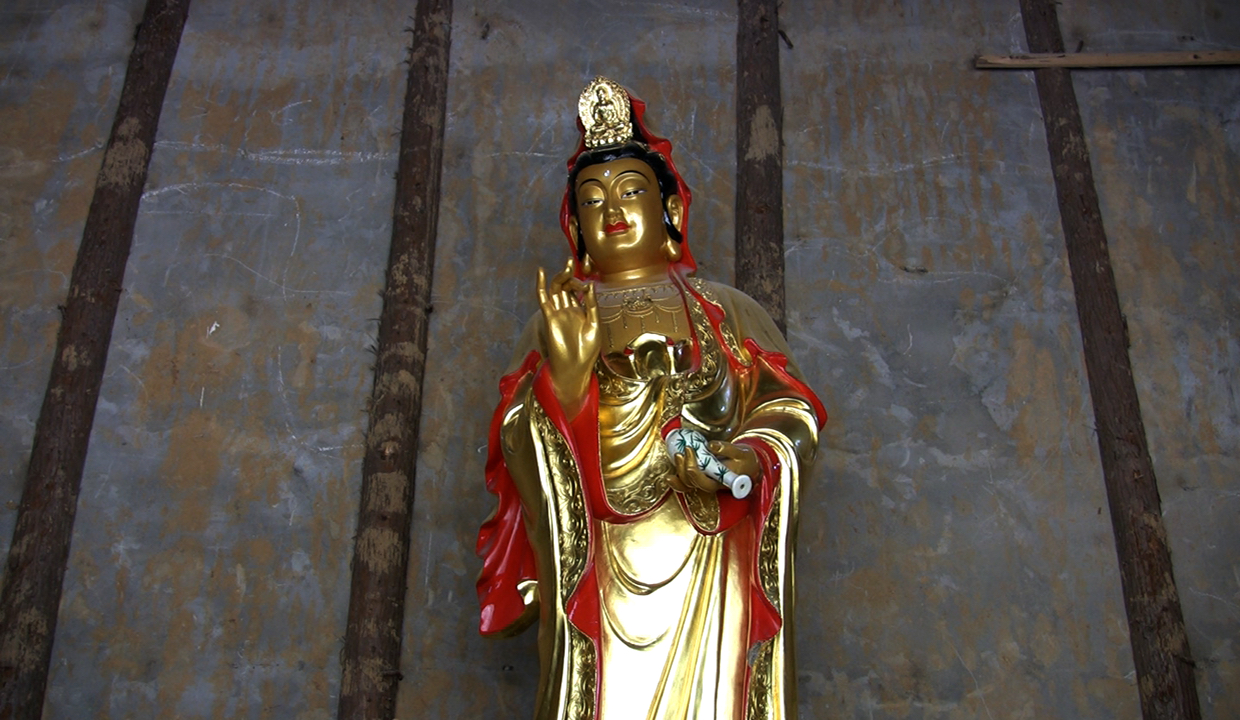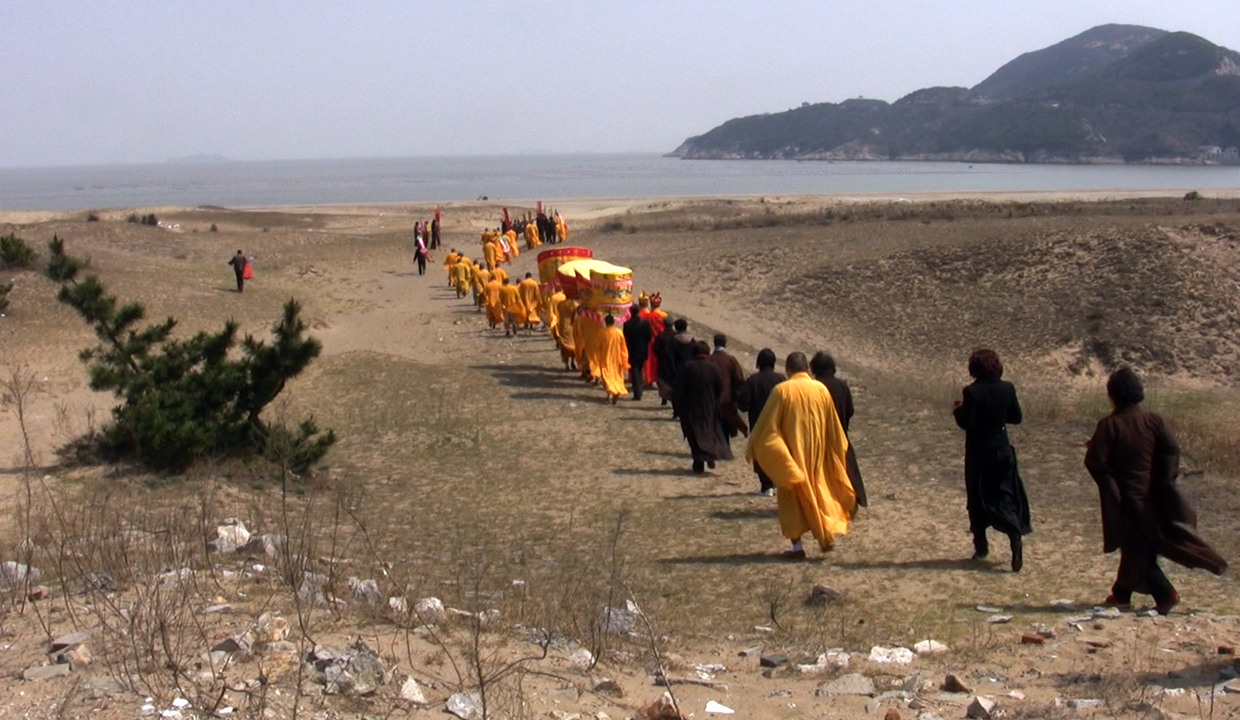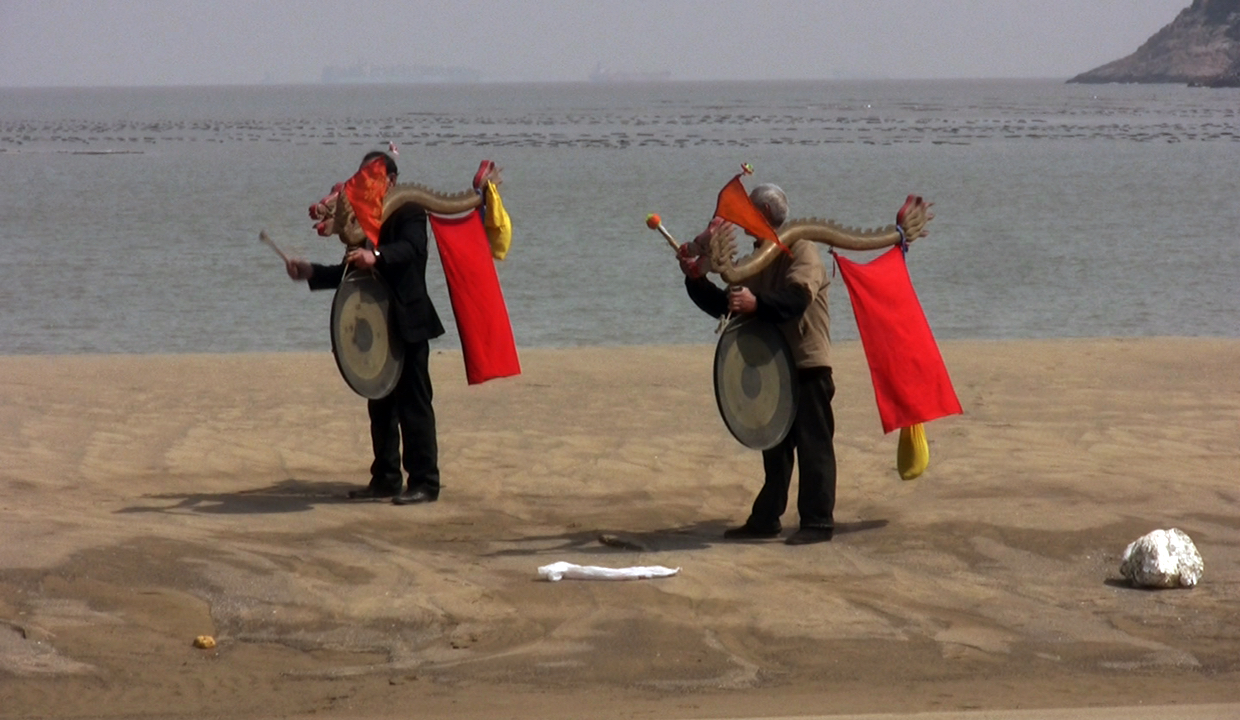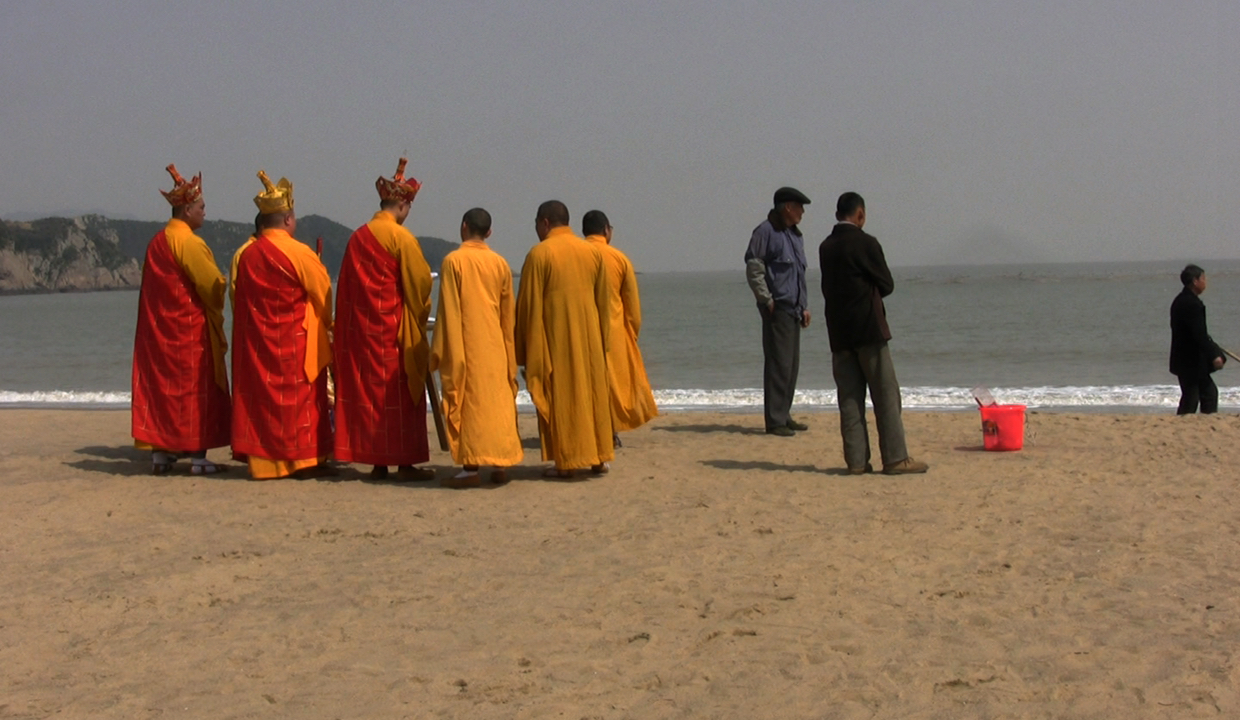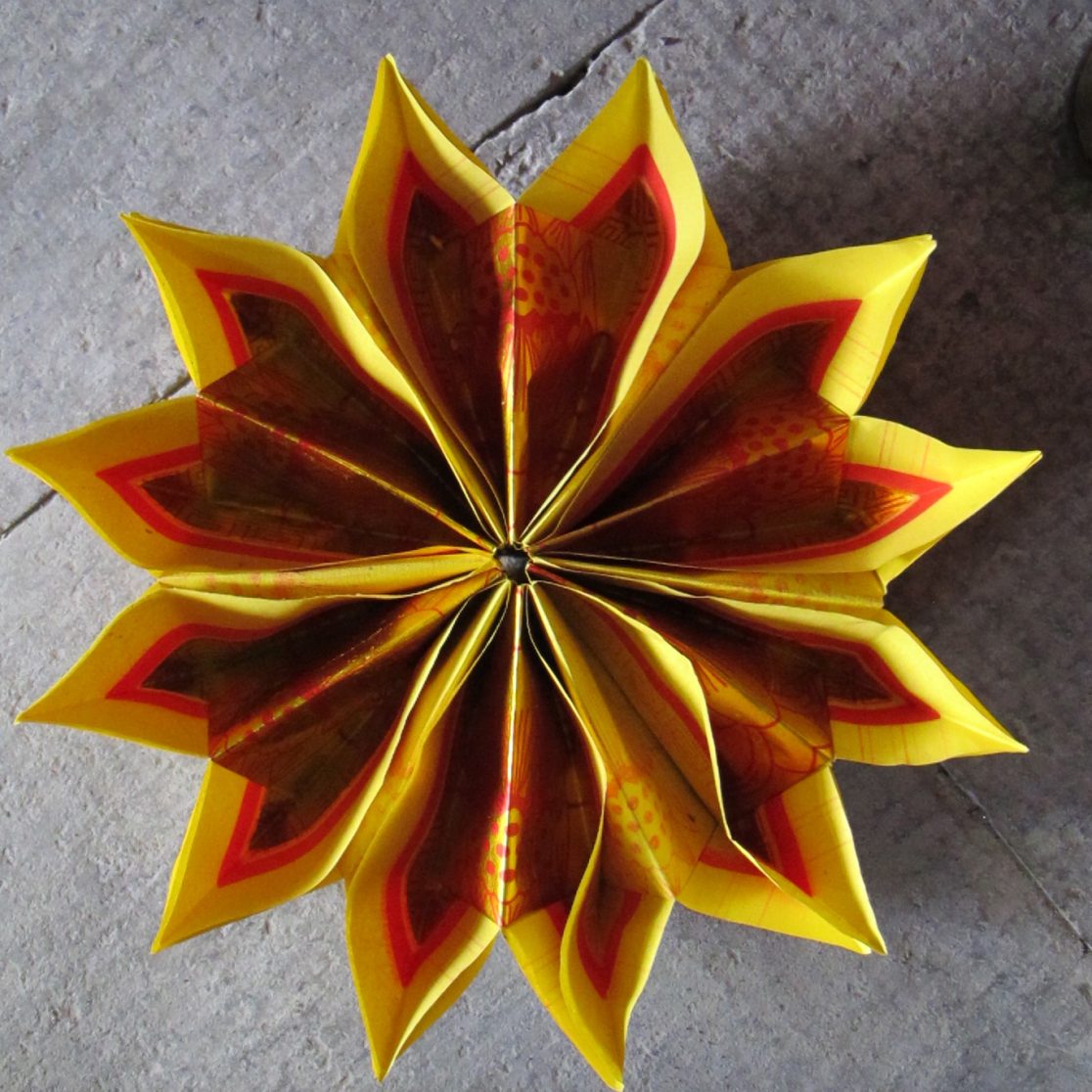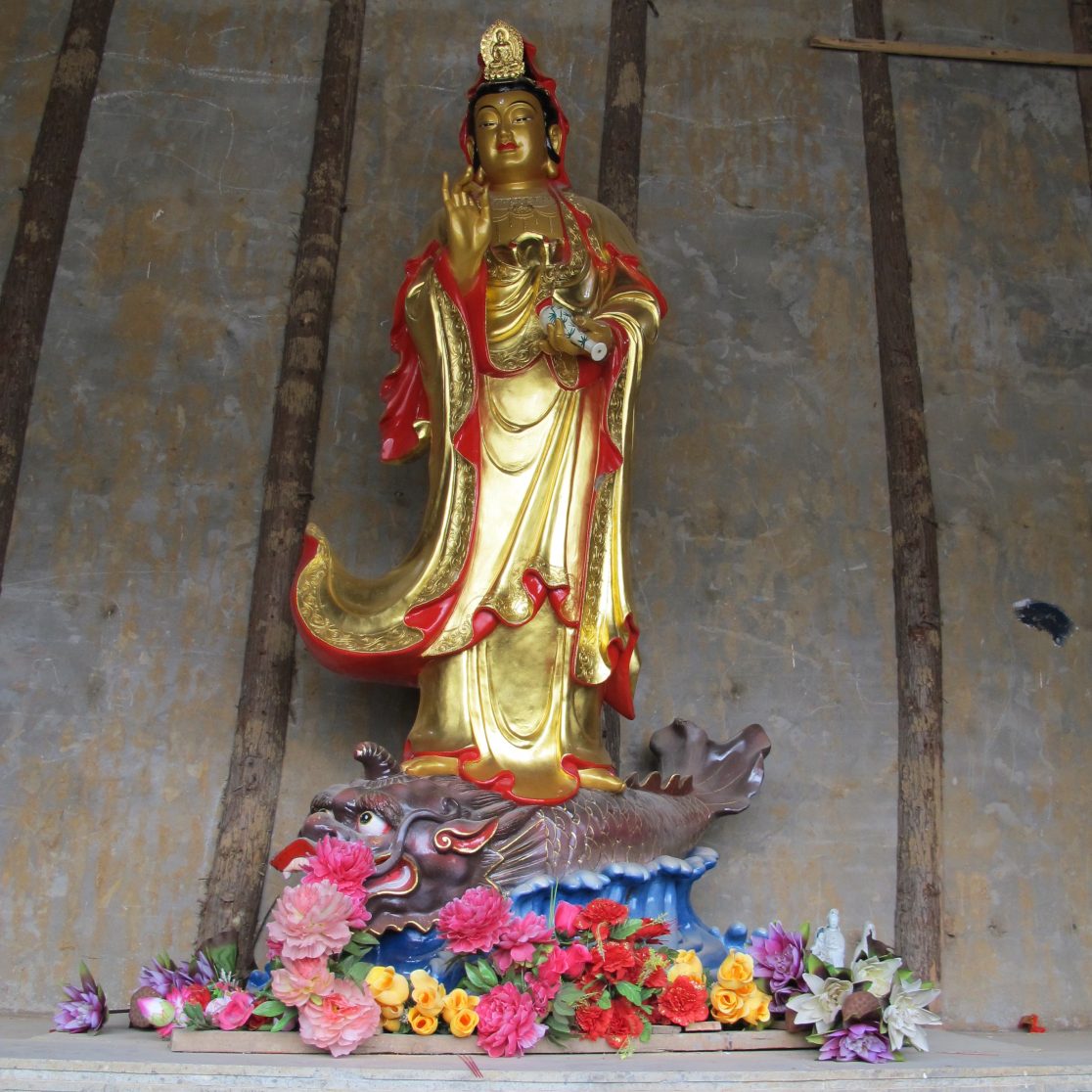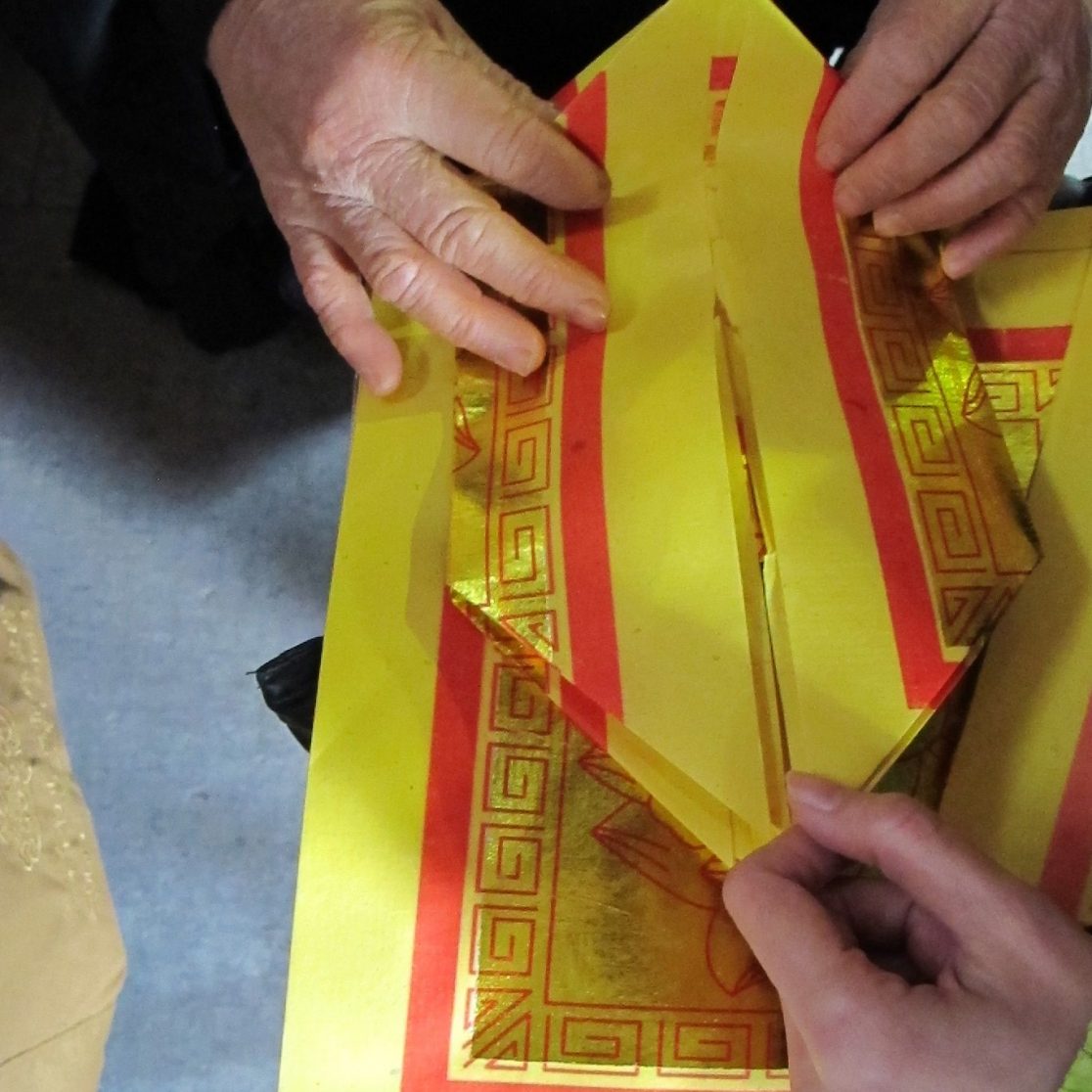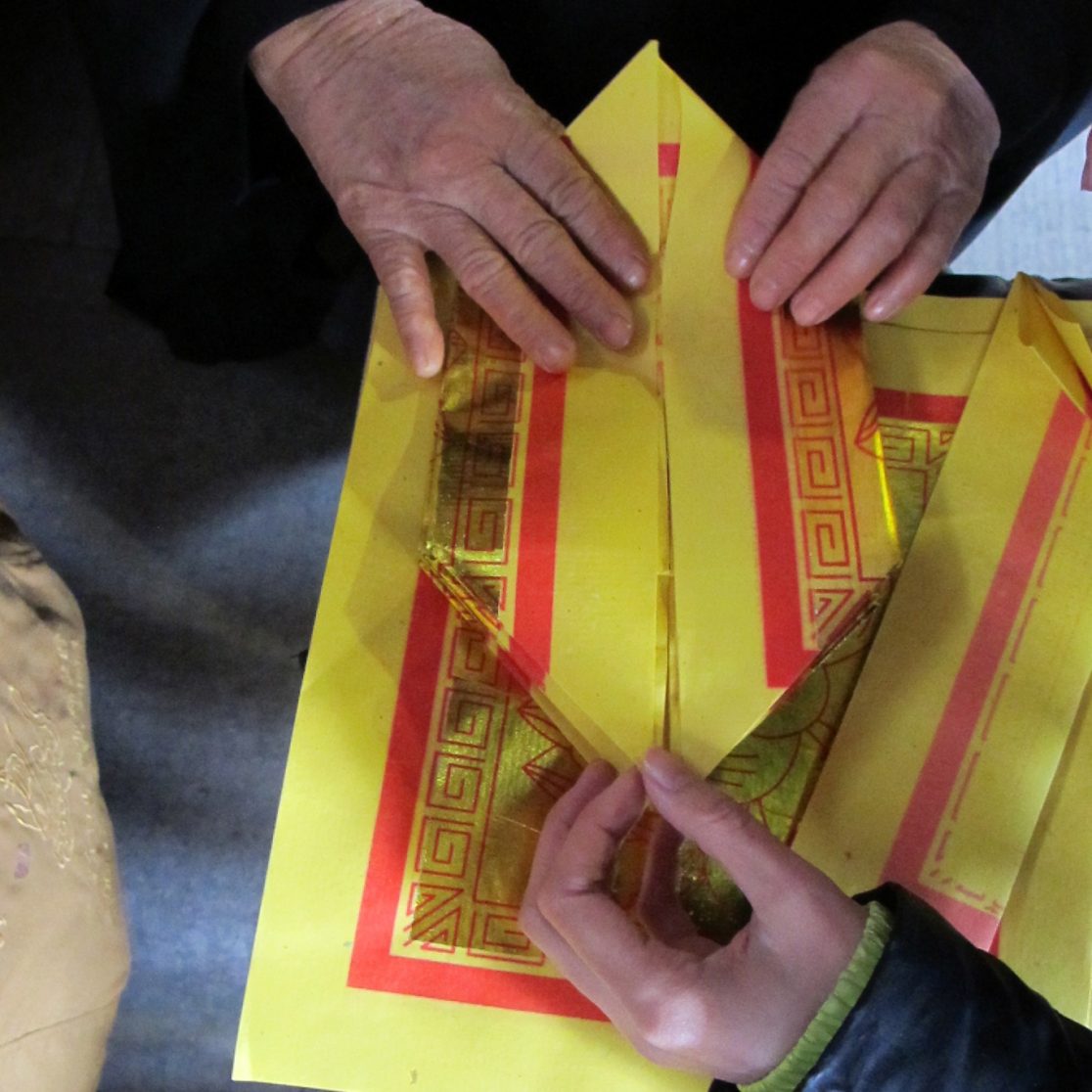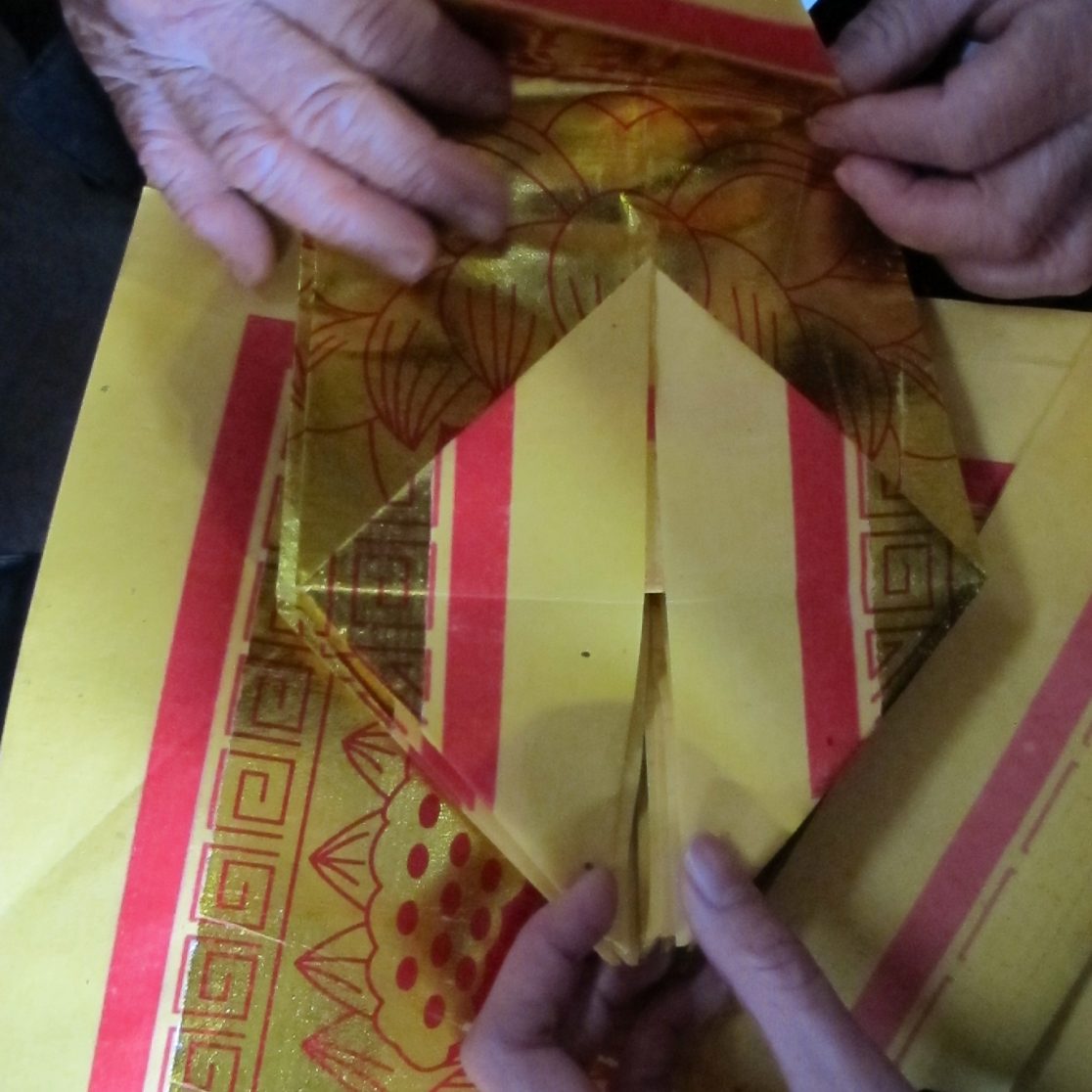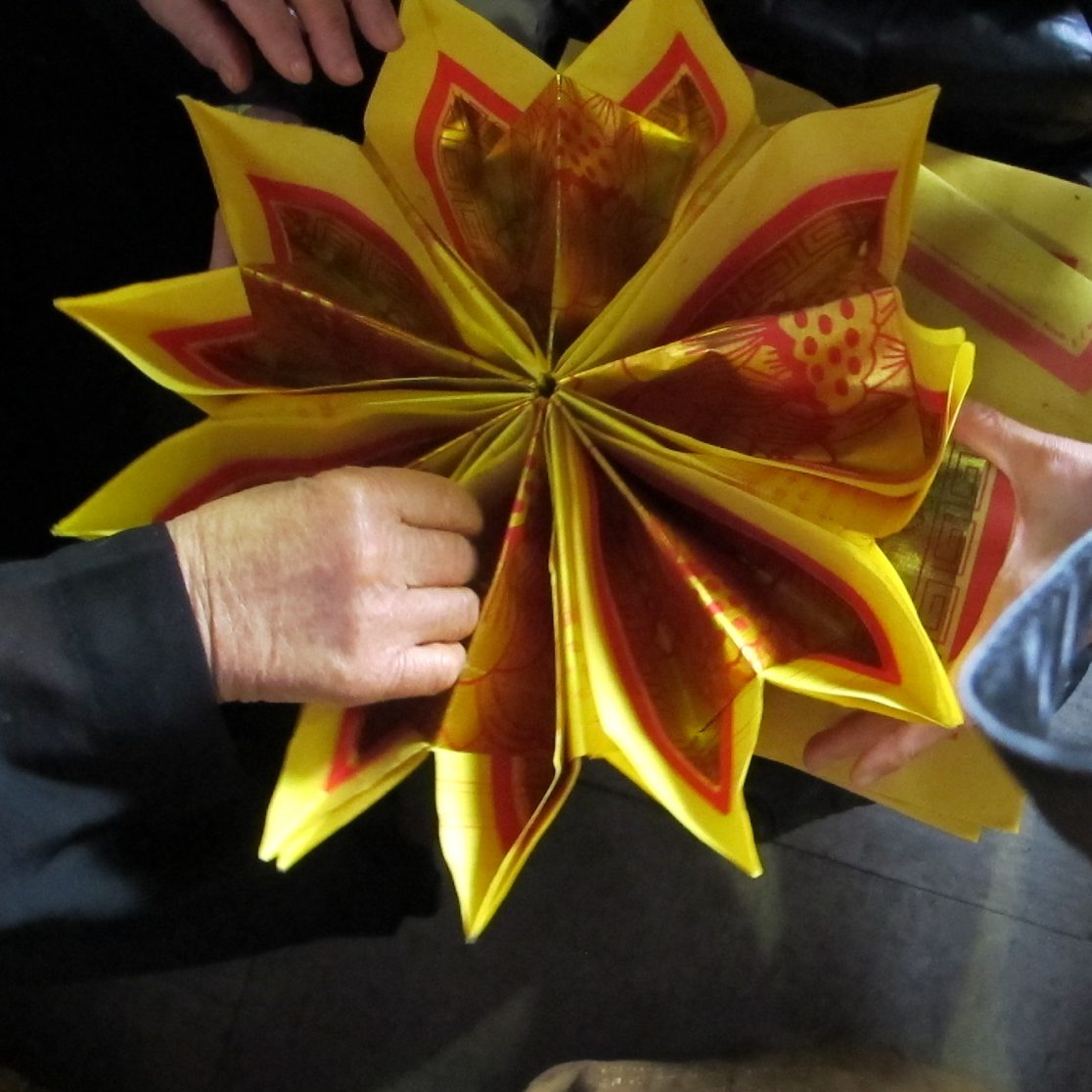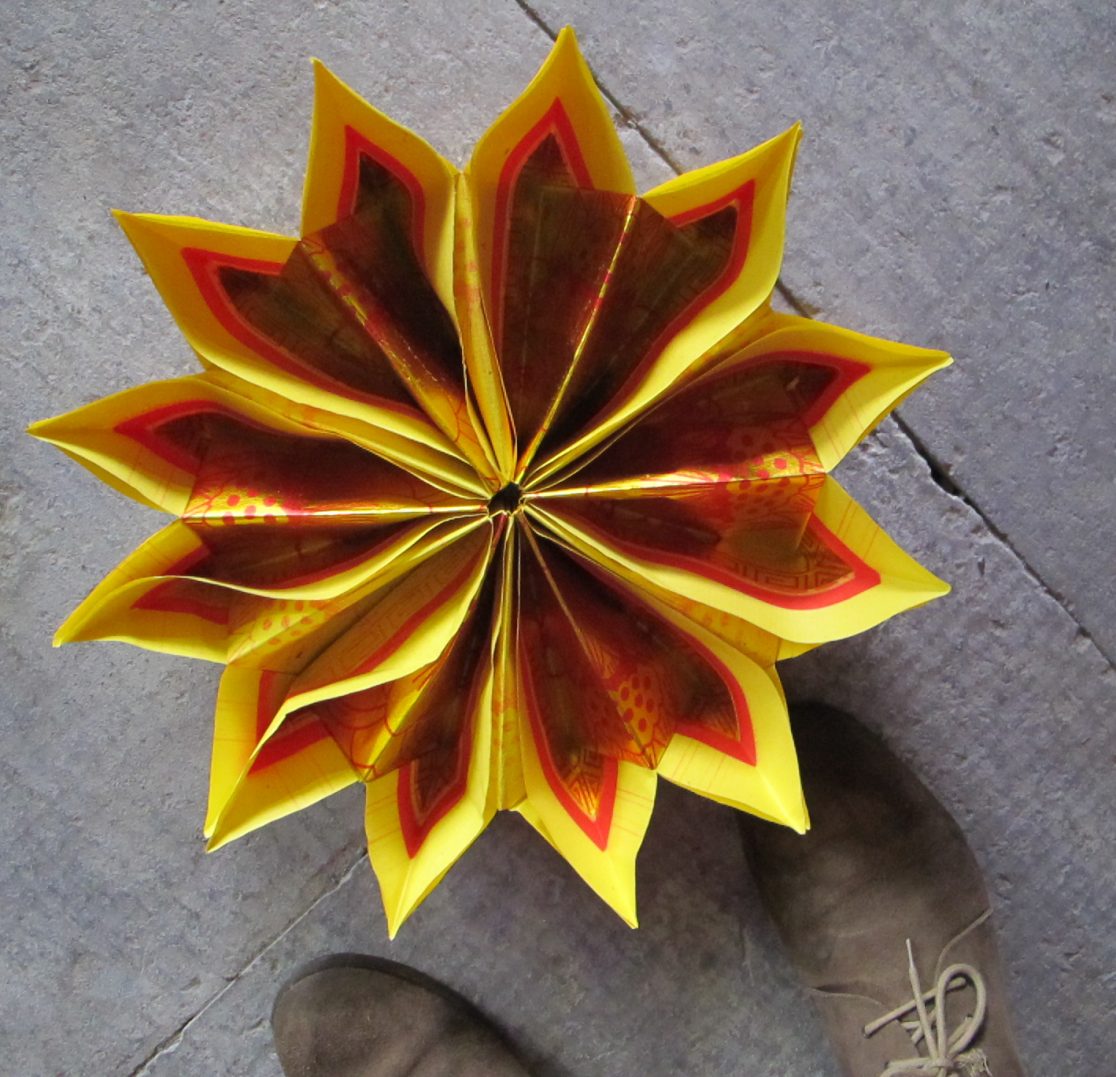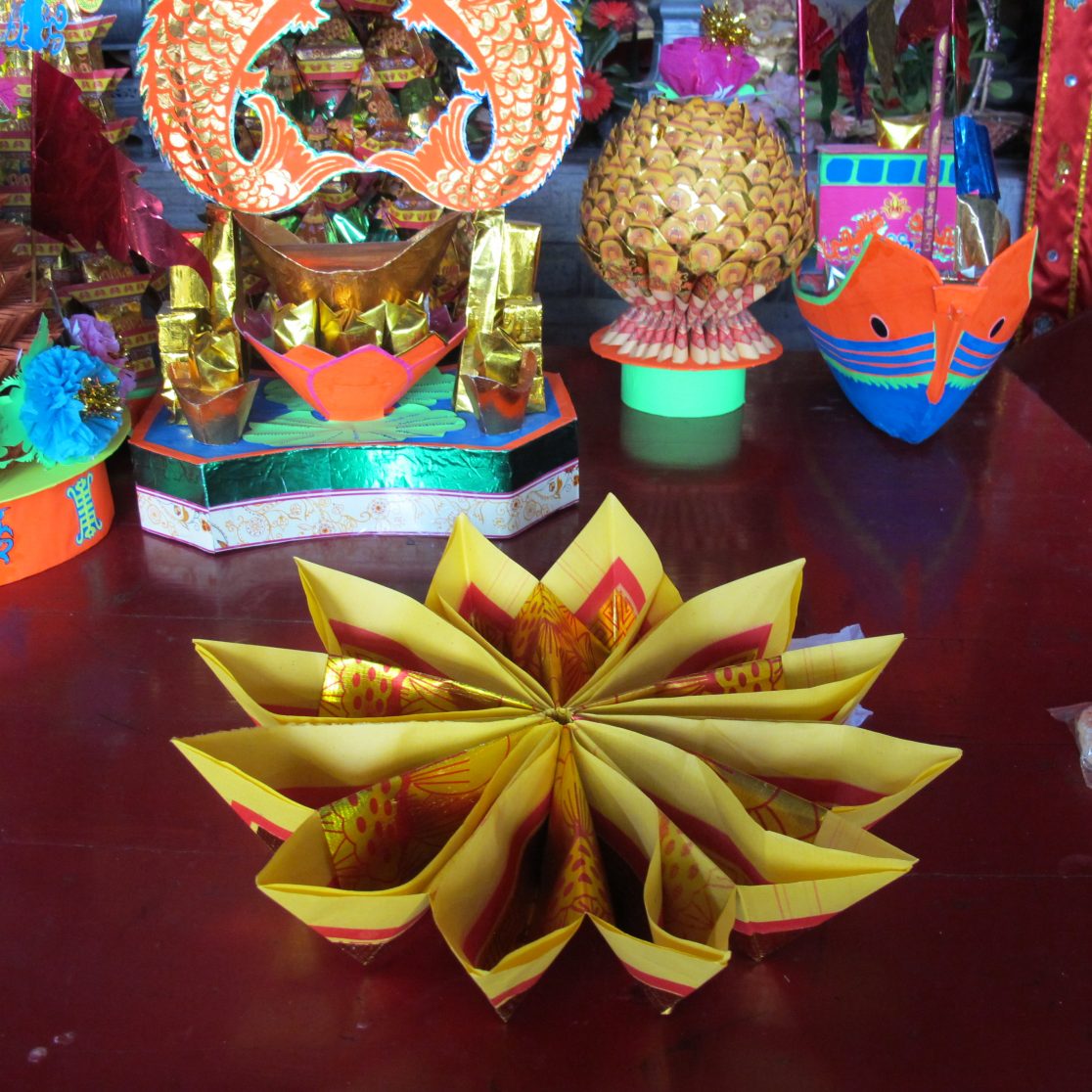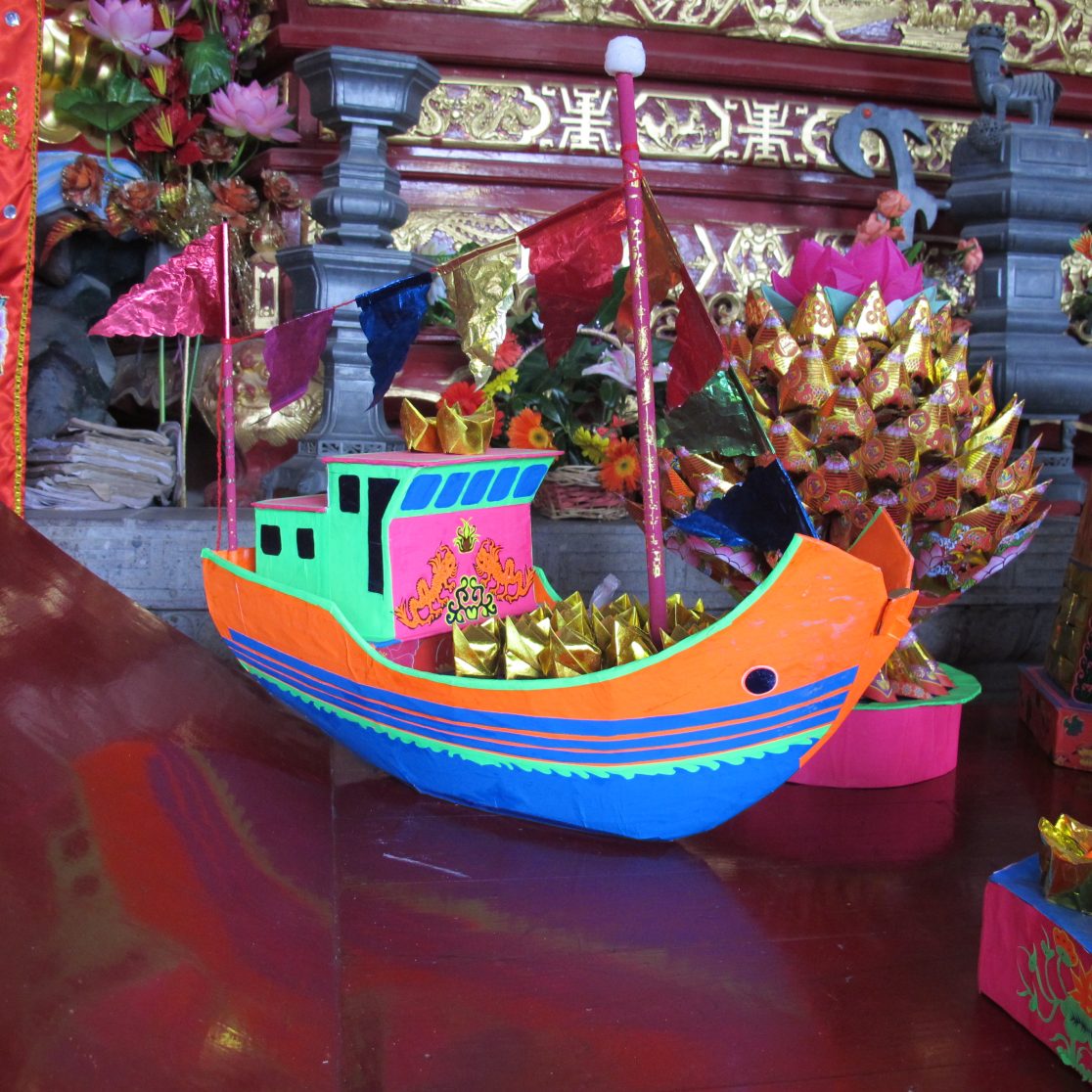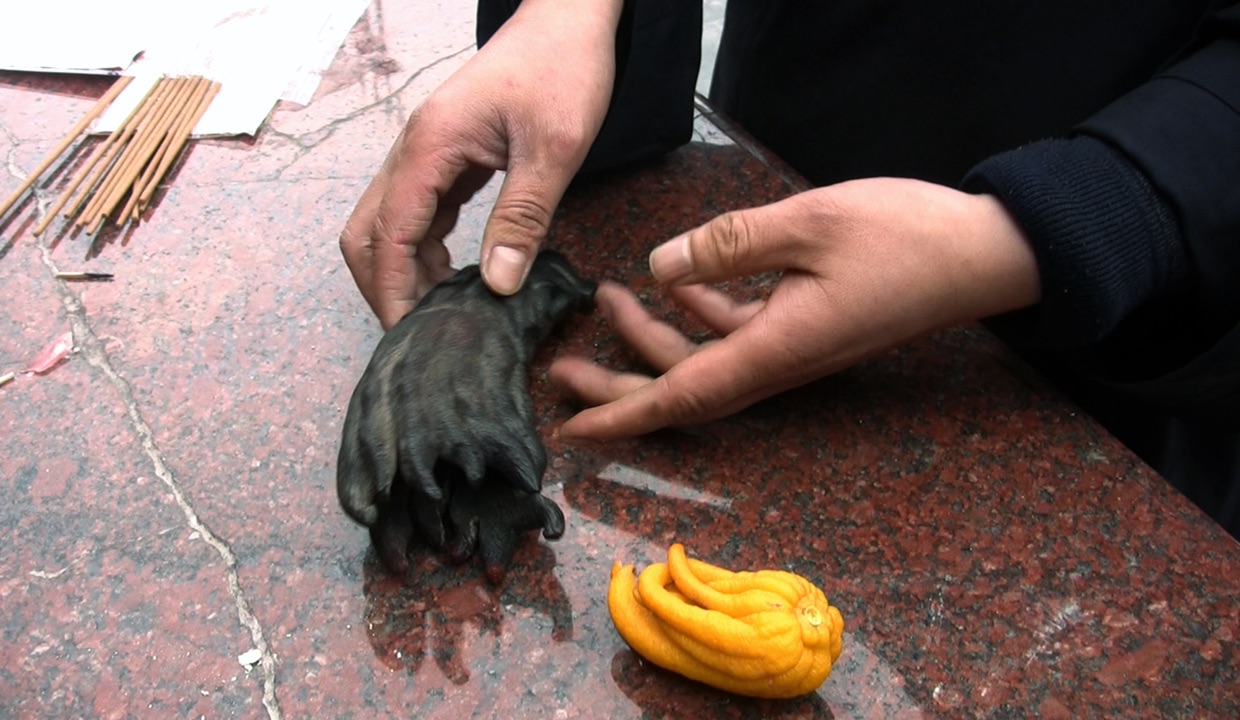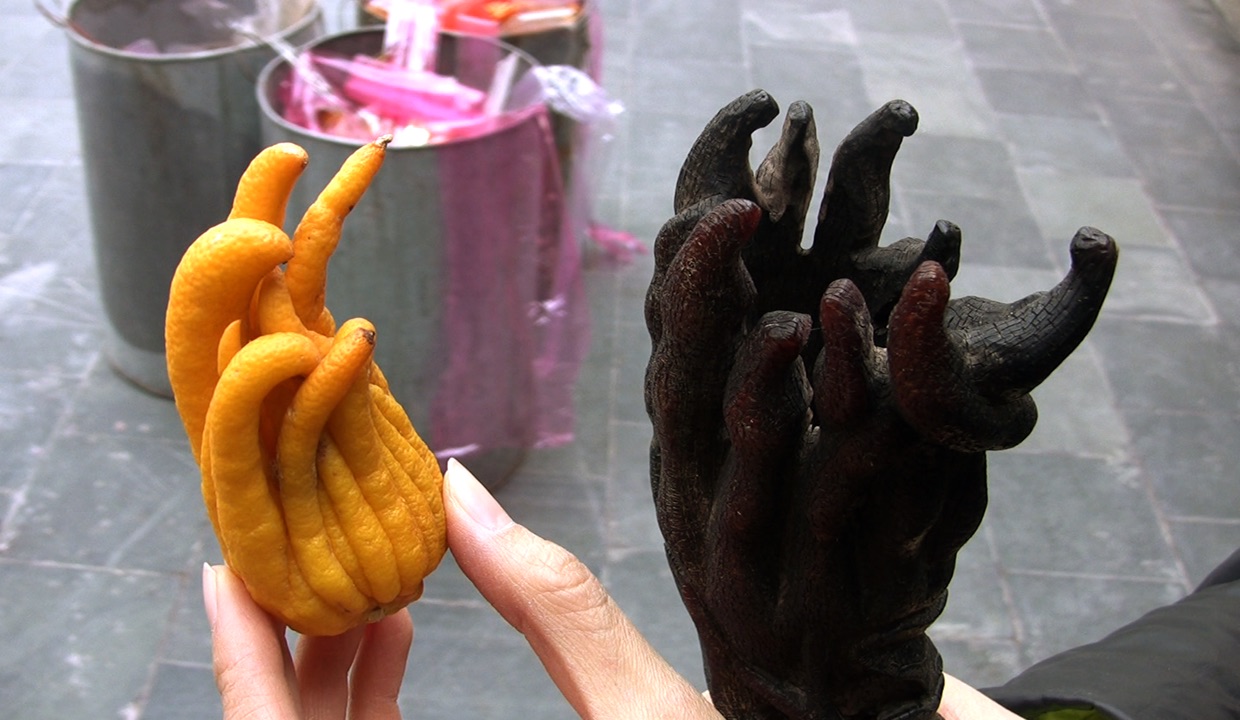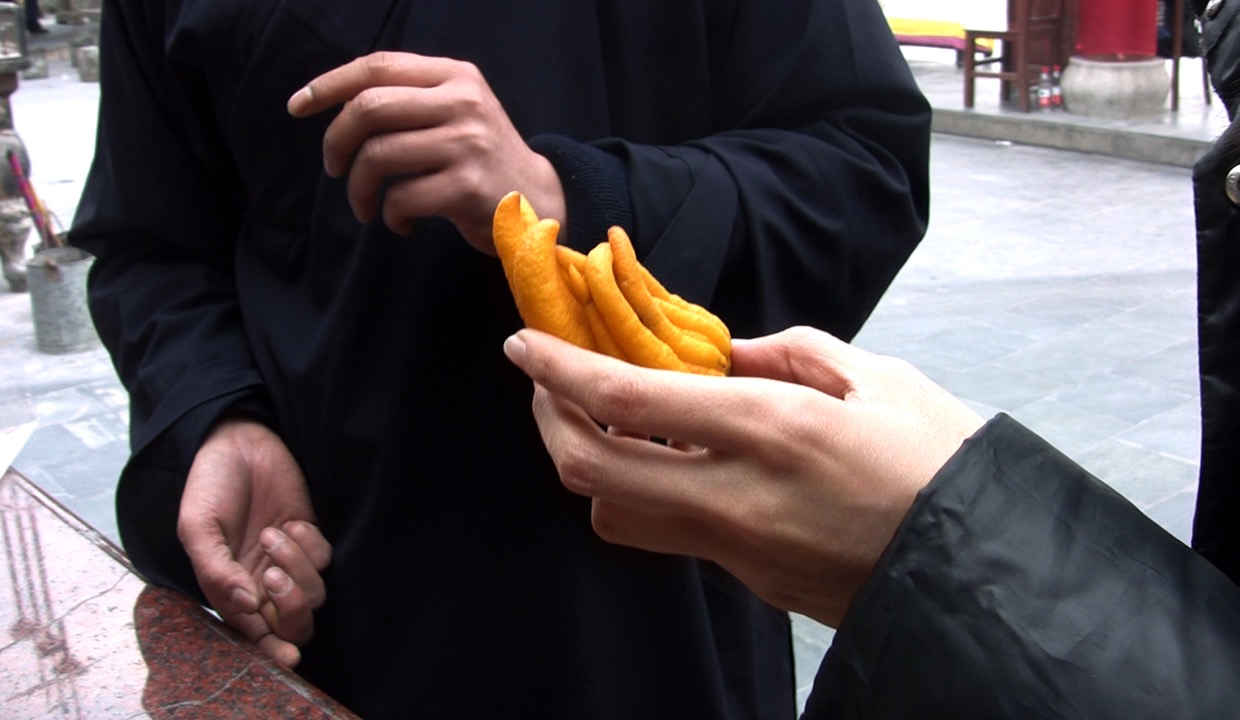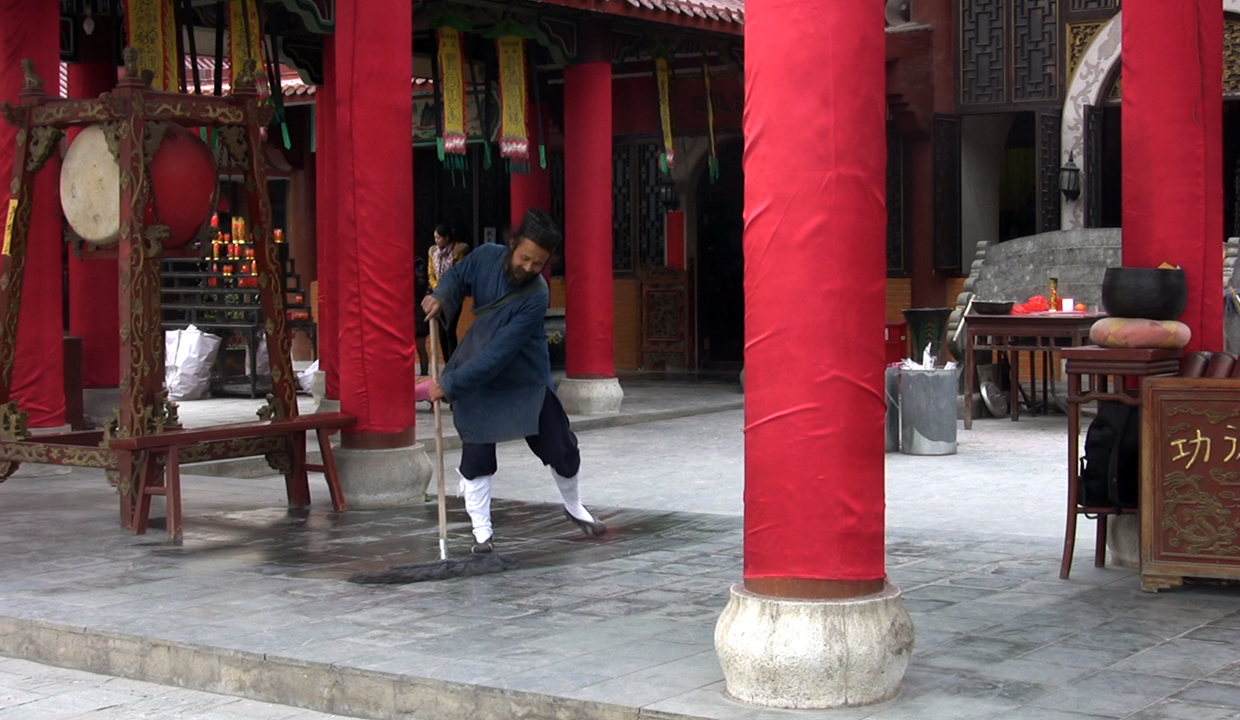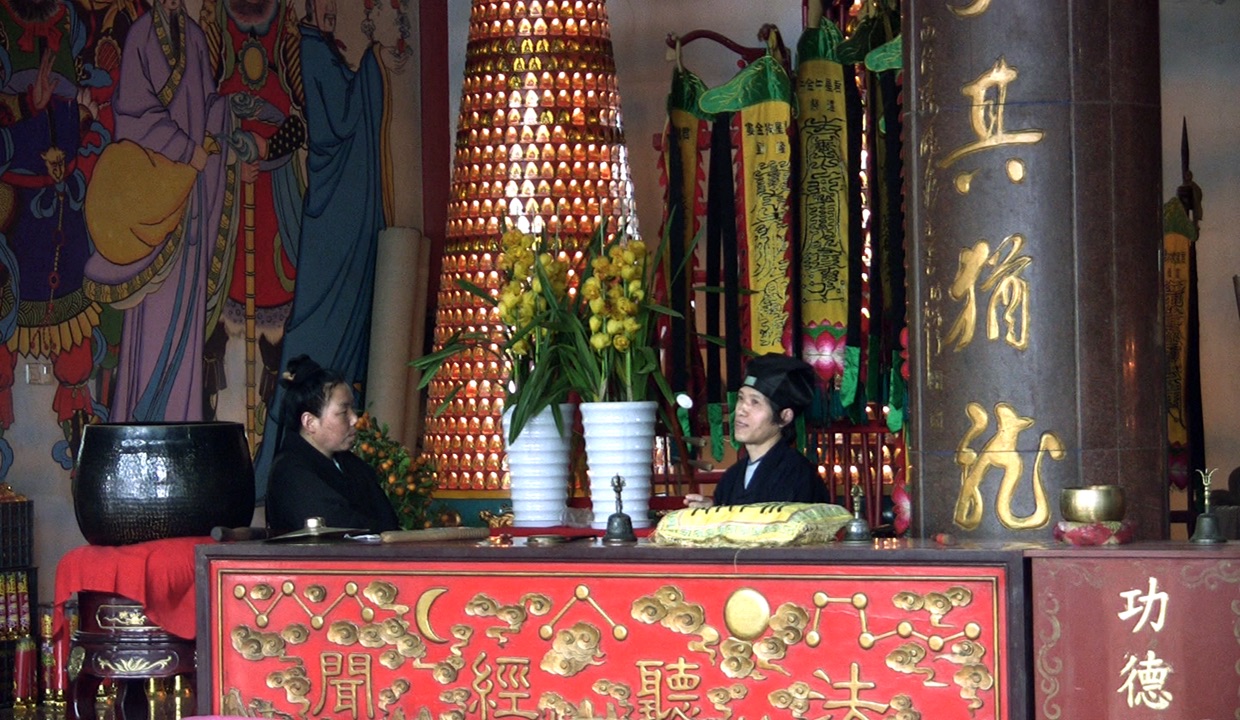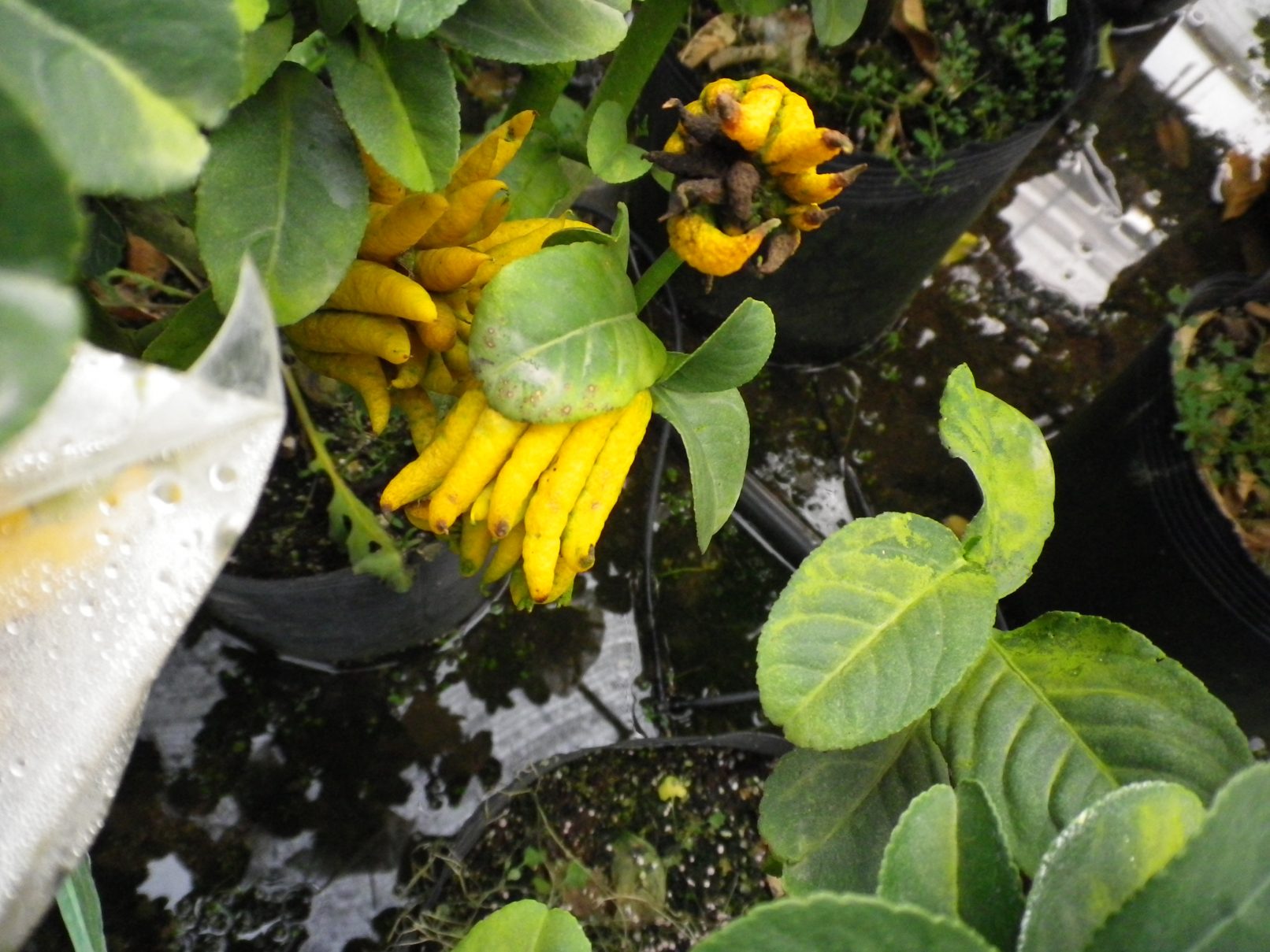The Buddha Hand. Celebration of Guan Yin’s Birthday, Bai Que Temple, Peach Blossom Island, China 2011
For The World of Gimel, Antje Majewski tried to find out more about seven objects she had in her possession. One of them was the a small blackened sculpture made from a horn, which she had bought on a flea market in Beijing in 2005. Not knowing what it represented, she decided to go back to China to find out. Her assistant Xu Shuxian told her it was a Buddha Hand, a citrus fruit that grows in South China. It is decorative and smells nice. The name comes from an old Chinese story, as told by Xu Shuxian:
“Once there was a princess called Miao Shan. She was the third daughter of Miao Zhuang, the King of China in the 7th century. She insisted on practicing Buddhism to enter religion. Her father was very sad and finally, he fell ill. No doctor could cure him. Miao Shan was very upset after finding this out, and she prayed for him every day. She had the same dream in three nights: two fairies were trying to chop her arm off. She was scared and went back to see her father. She found out that her mother had the same dream too. So she donated her arm to the doctor, in hopes of curing her father, and got back to the temple. After eating his daughter’s arm in soup, her father was cured. He realized that his daughter was such a loyal girl. He prayed for her everyday, and also ordered everyone in his country to pray. The rest of the arm soup was brought outside the city and poured to the ground. And out of this grew the tree of the Buddha-Hand-Citron. The golden, fragrant fruits look as if they had fingers. Later, Miao Shan grew 100 more arms and became the Thousand-Handed Guan Yin.”
Xu Shuxian and Antje Majewski visited Guan Yin‘s temple on Peach Blossom Island for the annual procession in honor of her birthday. They witnessed lay nuns making colorful presents out of paper, chanting and praying for several days. Finally, the paper gifts and big paper ships are brought in a procession to the sea, where they are burnt on the sand. The priests offer food and drink to Guan Yin, who appears to be also a sea goddess, merging with older Taoist goddesses.
The procession could symbolize the Buddhist notion of impermanence and the illusory world. But the priests also set up a small table, from which they sacrificed rice and rice wine to the sea by quickly tipping it into the sand – and the temple’s little, female Guan Yin, who concealed herself behind a towering male figure, was turned into a Mami Wata-like sea deity with a fish. Together with the lay female Buddhists, Antje and Shuxian sat at her feet and folded a lotus flower made of paper, which they then sacrificed to the sea.
Their journey went on: Buddha’s hand citrons grow on large plantations in Jinhua. Antje Majewski and Xu Shuxian were given two small seedlings on a plantation, both of which are now growing – one of them in Germany, the other at Shuxian’s in China. They also visited a Taoist temple. A Tao scholar there showed us a small tree, upon which a fruit was still hanging (which he gave to them), and he explained how one can use it to make a good tea for a sore throat. Tao scholars are very knowledgeable about plants and their uses, but also about the human body, because Qi can be enhanced by treating the body and mind well.
In Taoism, there is no personalized God that wants something and no constant soul; there is only Qi and Tao, the Way. Where the One (yuán qì) divides, there will be two (yin and yang), and it is from this that the billions of beings were created.
The Buddha Hand. Celebration of Guan Yin’s Birthday, Bai Que Temple, Peach Blossom Island, China 2011
A film by Antje Majewski
HD-Video, color, sound, 14 min, 2011
With: The monks, lay nuns and visitors of Bai Que Temple
Director, camera, sound, editing: Antje Majewski
Assistance: Xu Shuxian
Sound mixing assistance: Christoph Ulbich
Curator: Adam Budak
Produktion: Kunsthaus Graz
Thank you: The monks, lay nuns and visitors of Bai Que Temple; Xu Shuxian, Adam Budak, Peter Pakesch
Text:
Xu Shuxian, Die Antworten (2011)
Xu Shuxian: The Answers (2011)
Exhibition:
The World of Gimel, Kunsthaus Graz 2011
Catalogue:
Adam Budak, Peter Pakesch (Ed.), Antje Majewski, The World of Gimel. How to make objects talk. Kunsthaus Graz / Sternberg Press, 2011
